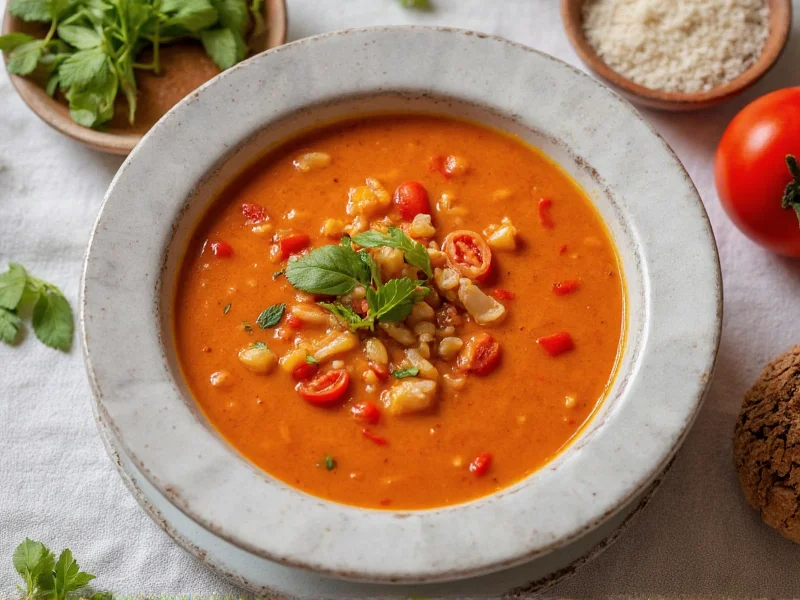Understanding Soup No. 5 in Vietnamese Culinary Tradition
Soup No. 5 represents a distinctive variation within Vietnamese pho culture that has generated both curiosity and misunderstanding outside Vietnamese communities. This specialized broth preparation goes beyond standard pho ingredients to include specific organ meats that give it its unique designation and cultural significance.
Cultural Origins and Context
The term "Soup No. 5" emerged from Vietnamese pho restaurant menu numbering systems, where different broth variations received numerical designations. While standard pho might be labeled as Soup No. 1 or No. 2, the "No. 5" designation specifically indicates the inclusion of additional ingredients that distinguish it from regular pho.
This culinary tradition developed within certain regions of Vietnam and became particularly prominent in Southern Vietnamese cuisine. The dish reflects traditional food-as-medicine concepts present in many Asian cultures, where specific foods are believed to provide particular health benefits.
Ingredients and Preparation Methods
Soup No. 5 contains all the standard components of traditional pho broth—beef bones, aromatic spices like star anise and cinnamon, ginger, and onion—but with the addition of specific organ meats. The "No. 5" designation typically indicates the inclusion of:
| Primary Ingredients | Preparation Method | Cultural Significance |
|---|---|---|
| Bull penises and testicles | Thoroughly cleaned, blanched, and simmered for extended periods | Believed to enhance male vitality in traditional contexts |
| Standard beef bones | Roasted and simmered for 8-12 hours | Creates rich broth base |
| Traditional pho spices | Dry-roasted and added to broth | Provides signature flavor profile |
The preparation requires specialized cleaning techniques and extended simmering to achieve the proper texture and flavor. Chefs must carefully balance the additional ingredients with the traditional pho spices to create a harmonious broth rather than an overpowering flavor.
Where Soup No. 5 Is Commonly Found
This specialized pho variation appears primarily in:
- Traditional pho restaurants in Southern Vietnam, particularly in Ho Chi Minh City
- Vietnamese communities in the United States, especially in areas with large Vietnamese populations like Orange County, California
- Specialty Vietnamese restaurants catering to traditional cuisine enthusiasts
Restaurants serving Soup No. 5 often list it discreetly on menus, sometimes using Vietnamese terms like "pho số 5" or descriptive terms rather than direct translations. Many establishments offer it as a specialty item rather than featuring it prominently.
Addressing Common Misconceptions
Soup No. 5 has become subject to numerous misconceptions, particularly regarding purported health benefits. While traditional belief systems associate certain foods with vitality enhancement, scientific evidence supporting specific health claims about Soup No. 5 remains limited.
Nutritionally, the additional organ meats do provide protein and certain nutrients like zinc and selenium, but no extraordinary properties beyond what other nutrient-dense foods offer. The belief in enhanced vitality represents traditional food-as-medicine concepts rather than scientifically verified effects.
It's important to understand Soup No. 5 within its proper cultural context rather than through sensationalized interpretations. The dish represents one variation within Vietnam's diverse culinary landscape, not an unusual or exceptional practice within its cultural framework.
Cultural Sensitivity Considerations
When discussing Soup No. 5, maintaining cultural sensitivity proves essential. What might seem unusual to outsiders represents a normal culinary practice within its cultural context. Many cultures incorporate organ meats into traditional dishes for both nutritional and cultural reasons.
Approaching this topic with respect for cultural differences helps avoid unnecessary sensationalism or misunderstanding. The dish reflects Vietnam's resourceful culinary traditions where various animal parts are utilized rather than wasted—a practice common in many traditional food cultures worldwide.
Experiencing Authentic Soup No. 5
For those interested in trying authentic Soup No. 5, seeking out established Vietnamese pho restaurants with positive community reputations provides the best opportunity. Look for restaurants that:
- Have been operating for many years
- Receive positive reviews from Vietnamese community members
- Prepare pho broth traditionally with extended simmering times
- Offer clear menu descriptions of their soup variations
When ordering, don't hesitate to ask restaurant staff for clarification about ingredients and preparation methods. Most authentic establishments will happily explain their traditional preparation techniques and cultural context.
Frequently Asked Questions
What exactly is in Soup No. 5?
Soup No. 5 contains traditional pho broth ingredients plus additional organ meats, specifically bull penises and testicles. These ingredients are thoroughly cleaned, blanched, and simmered with the standard beef bones and spices to create a distinctive variation of Vietnamese pho.
Does Soup No. 5 actually enhance male vitality as some claim?
While traditional belief systems associate Soup No. 5 with vitality enhancement, scientific evidence supporting specific health claims remains limited. The organ meats do provide protein and nutrients like zinc, but no extraordinary properties beyond what other nutrient-dense foods offer. The perceived benefits largely stem from cultural traditions rather than scientifically verified effects.
Where can I find authentic Soup No. 5?
Authentic Soup No. 5 is primarily available at traditional Vietnamese pho restaurants, particularly in Southern Vietnam and Vietnamese communities worldwide. In the United States, areas with large Vietnamese populations like Orange County, California often have restaurants serving this specialty. Look for established restaurants with positive reviews from community members for the most authentic experience.
Is Soup No. 5 safe to eat?
When prepared properly by experienced chefs following food safety guidelines, Soup No. 5 is safe to eat. Proper cleaning, blanching, and extended simmering eliminate potential safety concerns. As with any specialty food, it's important to choose reputable establishments with good hygiene practices for the safest experience.
How does Soup No. 5 differ from regular pho?
Soup No. 5 contains all the standard components of traditional pho broth but includes additional organ meats, specifically bull genitalia. The preparation requires specialized cleaning techniques and careful balancing of flavors to integrate these additional ingredients with the traditional pho spices, creating a distinctive variation within Vietnamese culinary tradition.











 浙公网安备
33010002000092号
浙公网安备
33010002000092号 浙B2-20120091-4
浙B2-20120091-4